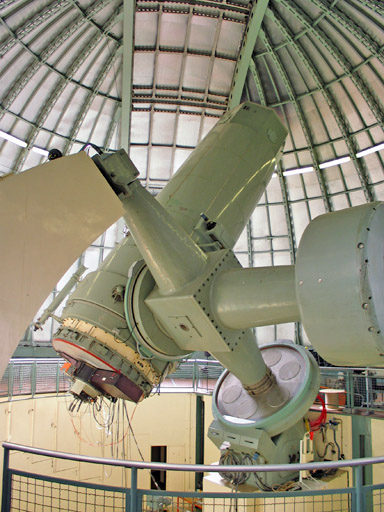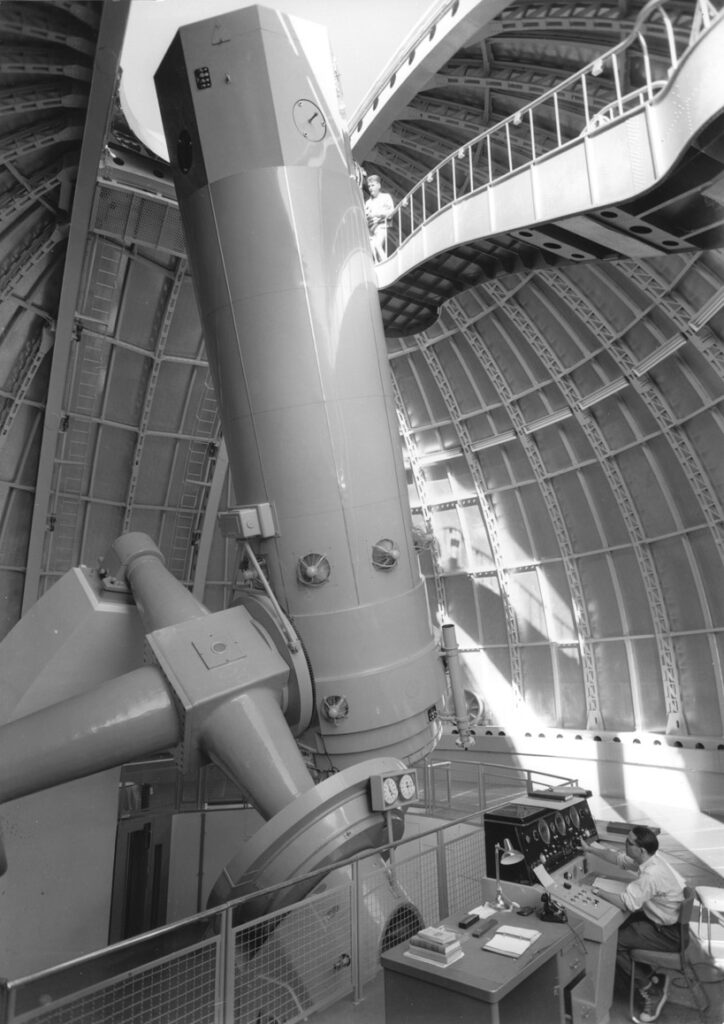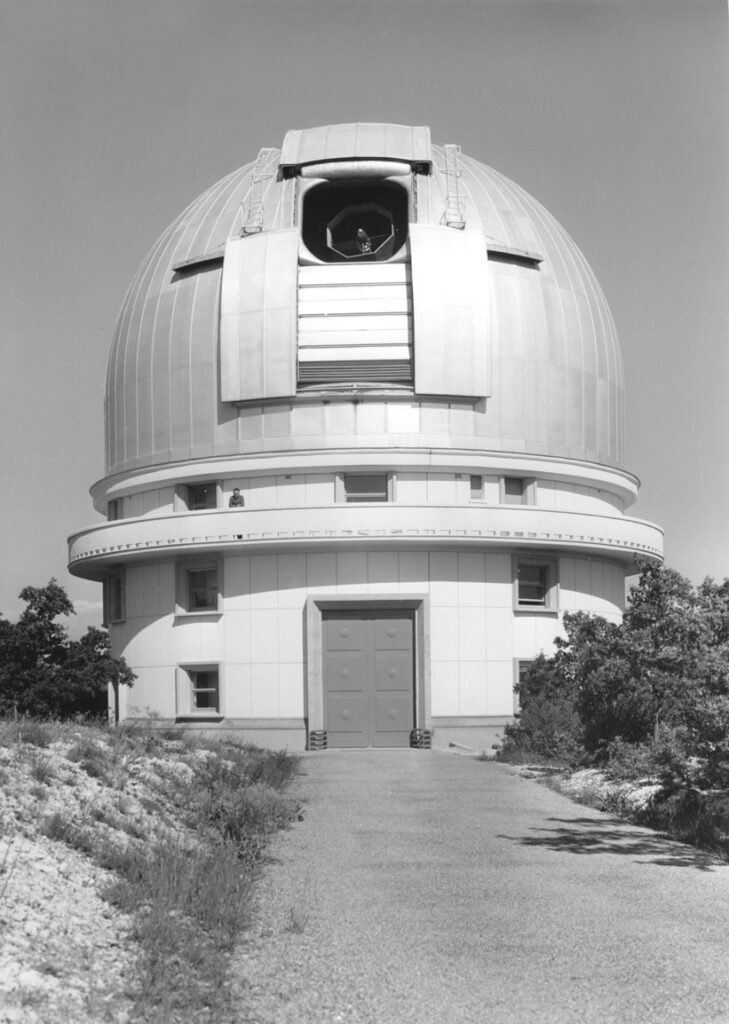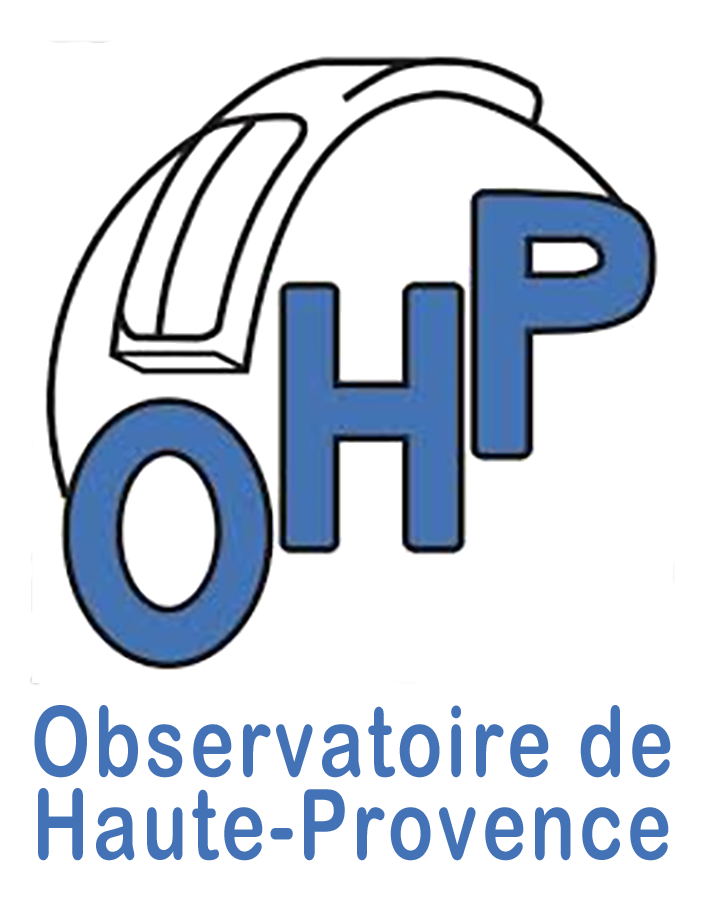

Le télescope de 193cm a été à l’origine doté de trois foyers différents : Newton (f/5), Cassegrain (f/15) et Coudé (f/32). Seul le foyer Cassegrain est utilisé maintenant.
Sur la photo de gauche on voit la bonnette du spectrographe échelle SOPHIE montée au foyer Cassegrain, installé depuis août 2006. Le spectrographe lui-même est implanté au niveau de l’ancien foyer coudé, sous le pilier Sud.
Une nouvelle caméra CCD est prévue pour SOPHIE en 2025.
Un nouvel instrument a été mis en service en 2021 au foyer Cassegrain, en parallêle avec SOPHIE : le spectro-imageur MISTRAL.
La bonnette d’interface Cassegrain (en noir sur la photo de gauche) permet l’installation occasionnelle d’instruments d’équipe comme l’instrument GHASP (réducteur focal + interferomètre Fabry-Pérot).
Un abaque de pointage permet de visualiser les régions du ciel accessibles avec le télescope T193.
Histoire du télescope de 193cm


Ce télescope, construit par Grubb & Parsons à Newcastle (UK), fut monté pendant l’été 1957 et réceptionné en décembre 1957 avec un miroir factice en béton. L’optique fut installée début 1958. Les premières observations datent du 17 juillet 1958. Sur la photo de droite, J. Texereau est au pupitre de commande et R. Leblondet sur la passerelle Newton.
De nombreux instruments ont été utilisés dans le passé sur ce télescope (bonnettes photo, réducteurs focaux, plusieurs caméras électroniques différentes, les spectros Chalonge, “D”, NEOM, “O”, TGR, Nébulaire (Pellet-Deharveng), Roucas, BS, ISIS, et bien sûr le celèbre ELODIE). Le plus grand, le spectrographe Coudé, construit par la société REOSC, fonctionna entre Juillet 1959 et Février 1985.
